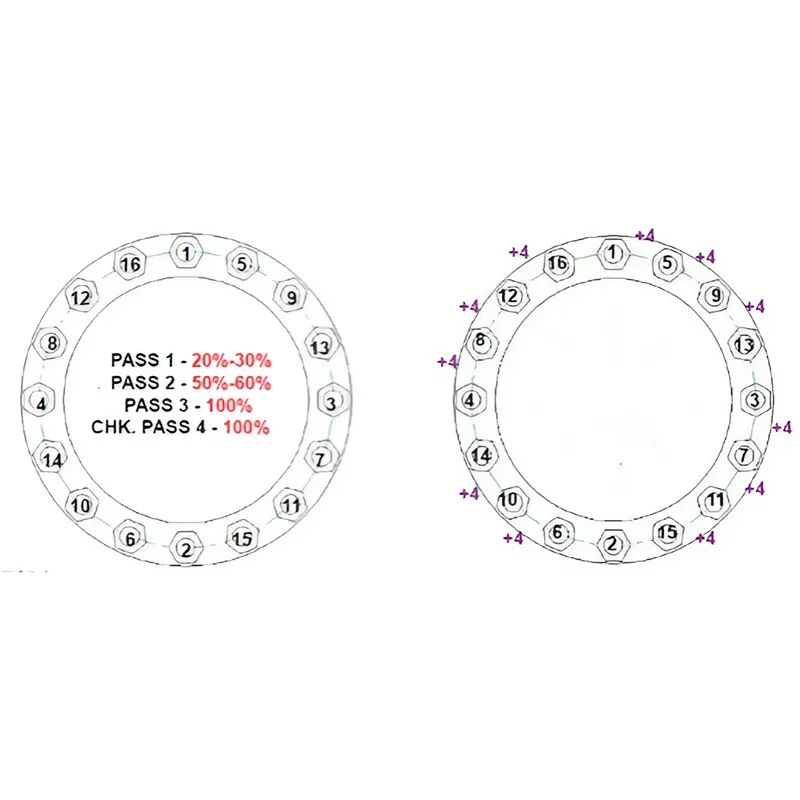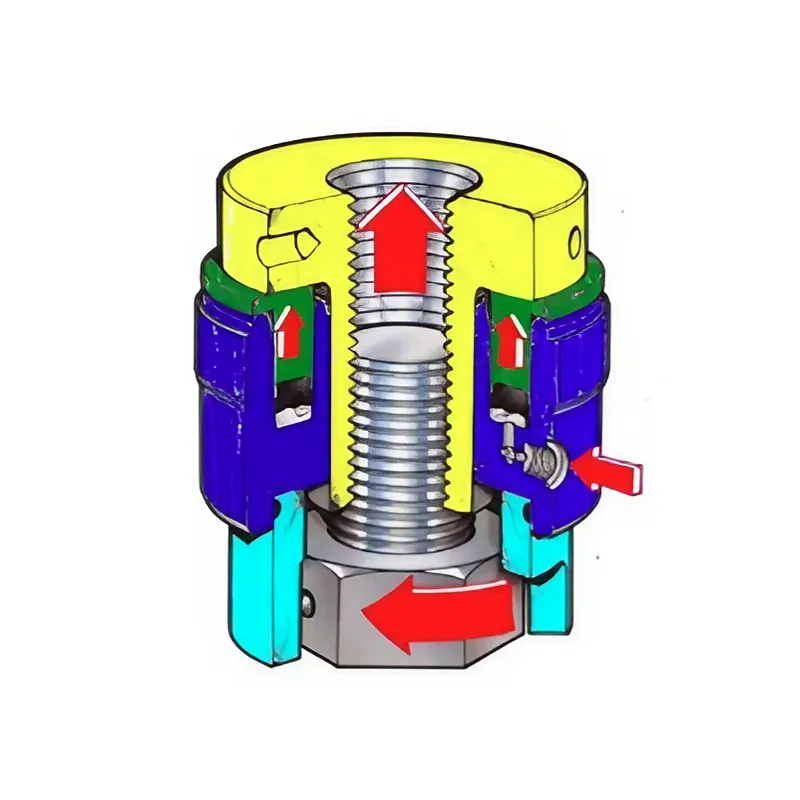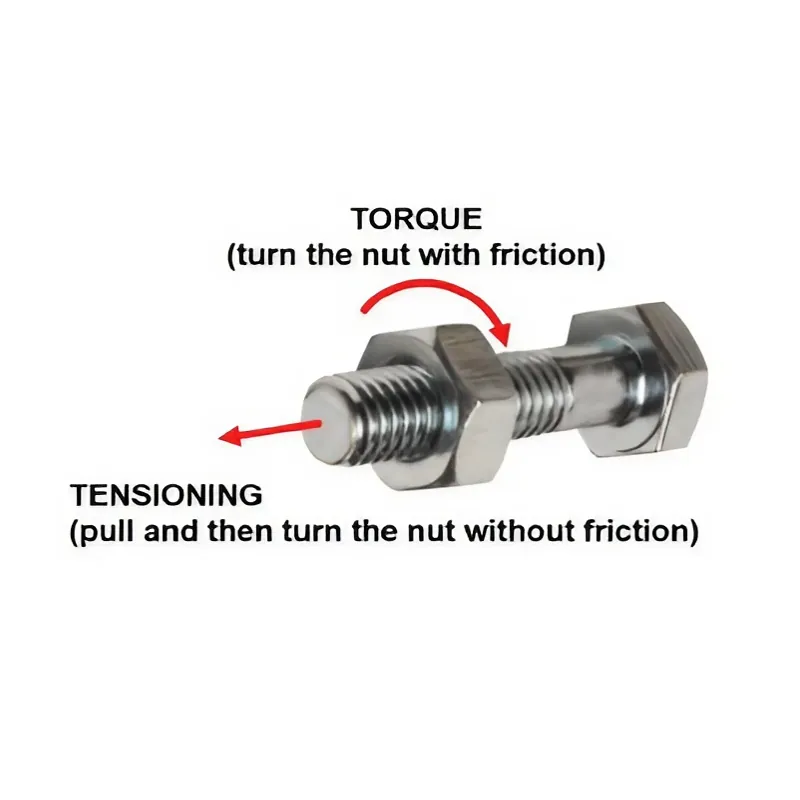Bolted Joint Integrity: The Role of Mechanical Bolts and Hydraulic Tensioners
The unassuming mechanical bolt, with its threaded design and hexagonal head, is a cornerstone of modern engineering. From towering bridges to intricate car engines, these fasteners play a vital role in holding structures and machinery together.
Types of Bolts
Studs: Threading along the entire length, studs screw into a tapped hole or a nut for securement.
Bolts: Featuring a fixed head on one end, bolts thread into a nut for fastening.
Bolted Joints and Their Applications
Bolted joints come in three main categories:
Process Equipment and Piping: These joints connect pipes, valves, and other components, often requiring periodic disassembly and reassembly for maintenance.
Machinery: Engine, generator, and turbine components rely on bolted joints for secure assembly, necessitating frequent opening and closing for inspection purposes.
Structural: Beams, columns, and trusses utilize bolted joints for structural integrity. These joints typically remain undisturbed unless major refurbishment or demolition is undertaken.
Bolting Methods: Torque vs. Tension
There are two primary methods for tightening bolts:
Torquing: This method employs a Torque Wrench to apply a specific rotational force to the bolt. Torque is calculated by multiplying the force applied by the distance from the pivot point to the point of force application.
Tensioning: This method utilizes a hydraulic tensioner to stretch the bolt to a predetermined length. This stretching ensures a specific preload on the bolt, guaranteeing proper clamping force within the joint.
Flange Alignment and Gasket Selection
Proper alignment of flanges in piping systems is crucial for joint integrity. Misaligned flanges lead to uneven bolt loading, potentially causing leaks or joint failure.
Gaskets, typically made from rubber, metal, or composite materials, provide a seal between two flanges. The appropriate gasket selection depends on the application and the pressure and temperature conditions the joint will encounter.
Parallel Joint Closure and Safety Precautions
When tightening bolts, a specific sequence, often a star pattern or "plus 4" pattern, is followed to ensure even load distribution across the joint, a process known as parallel joint closure.

Safety is paramount when working with bolts. Here are some essential safety precautions:
Wear appropriate Personal Protective Equipment (PPE) such as safety glasses, gloves, and hearing protection.
Be aware of pinch points and the line of fire of hydraulic tensioners.
Exercise caution when handling hydraulic pumps and hoses.
Hydraulic Bolt Tensioners: Ensuring Precise Bolt Loading
hydraulic bolt tensioners are essential for precise bolt stretching in critical applications across industries like oil and gas, power generation, and aerospace.
How Hydraulic bolt tensioners Work:
These tensioners utilize a hydraulic power pack and several key components:
Reaction Bridge: Provides a stable base to resist the pulling force exerted by the tool.
Load Cell: Measures the exact tension applied to the bolt.
Puller Bar: Attaches to the bolt and transmits the pulling force.
Nut Rotator: Rotates the nut for final tightening after the bolt is stretched.
Hydraulic Cylinder and Piston: Generates the pulling force using pressurized fluid.

The tensioning process follows these steps:
Preparation: Bolt size is measured to determine the appropriate tensioning force and select the right tool.
Positioning: The nut rotator is secured on the nut, and the reaction bridge is positioned on the flange for proper load distribution.
Tensioning: The load cell is connected, and the puller bar is engaged with the bolt threads. Hydraulic pressure is then applied.
Bolt Stretch: The pressurized fluid extends the piston within the cylinder, pulling on the puller bar and stretching the bolt.
Nut Tightening: The gap created by stretching allows the nut to be rotated and tightened to the desired torque.

Benefits of Hydraulic Bolt Tensioners
Accuracy and Consistency: Hydraulic tensioning ensures precise and consistent bolt pre-load, which is vital for maintaining joint integrity.
Safety: By eliminating the risk of over-torquing, these tools prevent bolt failure and promote safe equipment operation.
Repeatability: They deliver consistent results across multiple tightening cycles.
Conclusion
Mechanical bolts and hydraulic tensioners play a crucial role in ensuring the integrity and longevity of bolted joints across a wide range of industries. Understanding the fundamentals of bolts, bolted joints, bolting methods, and safety precautions is essential for proper application and maintenance. Hydraulic bolt tensioners, with their precise control over bolt pre-load, offer significant benefits in terms of accuracy, consistency, and safety. Careful design considerations, performance analysis, and selection of these tensioners are paramount for achieving optimal results in critical applications. By employing these tools and practices effectively, engineers can ensure the structural integrity and long-term reliability of bolted joints in various engineering endeavors.
Why Choose SAIVS™ as Your Supplier?
With 20 years of industry experience, SAIVS is a leading Chinese manufacturer of high-quality tools, offering competitive pricing and excellent customer service.We pride ourselves on exceptional quality control, extensive experience, and comprehensive after-sales service.